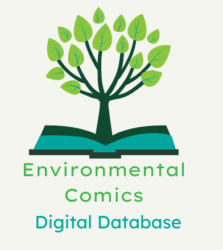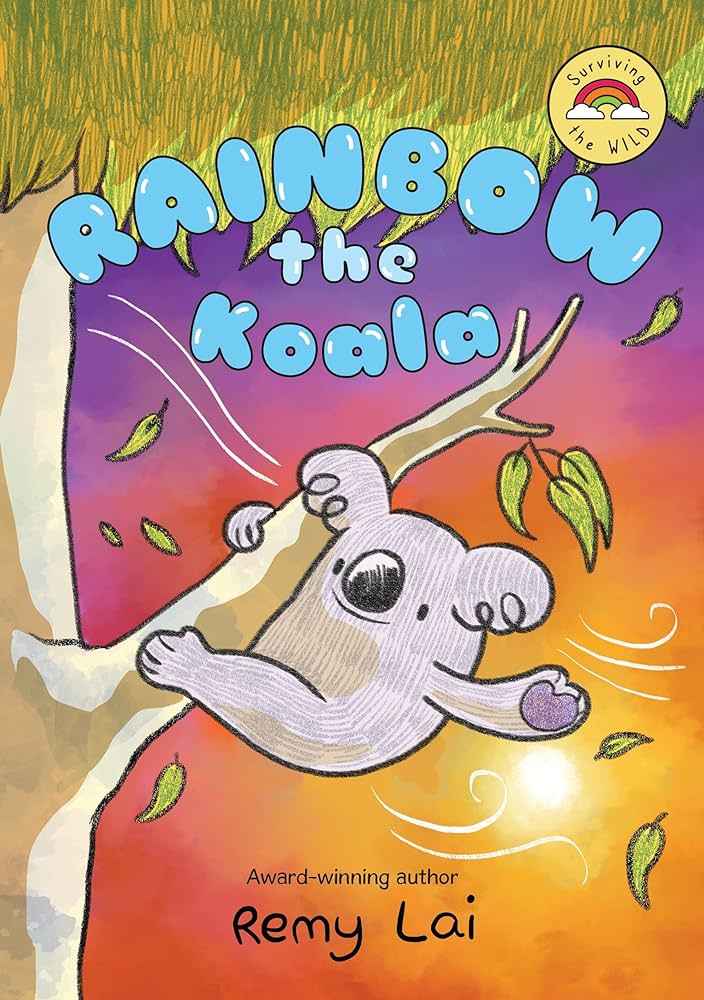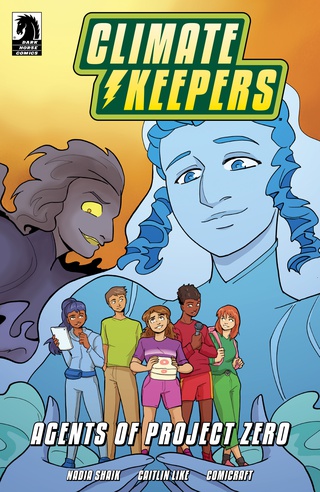“I want you all to realize: Pollution isn’t just something that’s happening to other people” — Ms. Freeman, The Leak, p. 53.
| Creator(s) | Kate Reed Petty (author), Andrea Bell (illustrator) |
| Publisher | First Second |
| Publication Date | 2021 |
| Genre | Mystery, Fiction |
| Environmental Themes and Issues | Pollution, Water Conservation, Environmental Justice, Environmental Activism, Animals in Danger |
| Protagonist’s Identity | Ruth: A brown-skinned biracial, middle school girl The comic also features a multi-racial cast of characters |
| Protagonist’s Level of Environmental Agency | Level 5: High Environmental Agency and Activism |
| Target Audience | Middle Grade (8 to 12 years) |
| Settings | Fictional town of Twin Oaks in the United States |
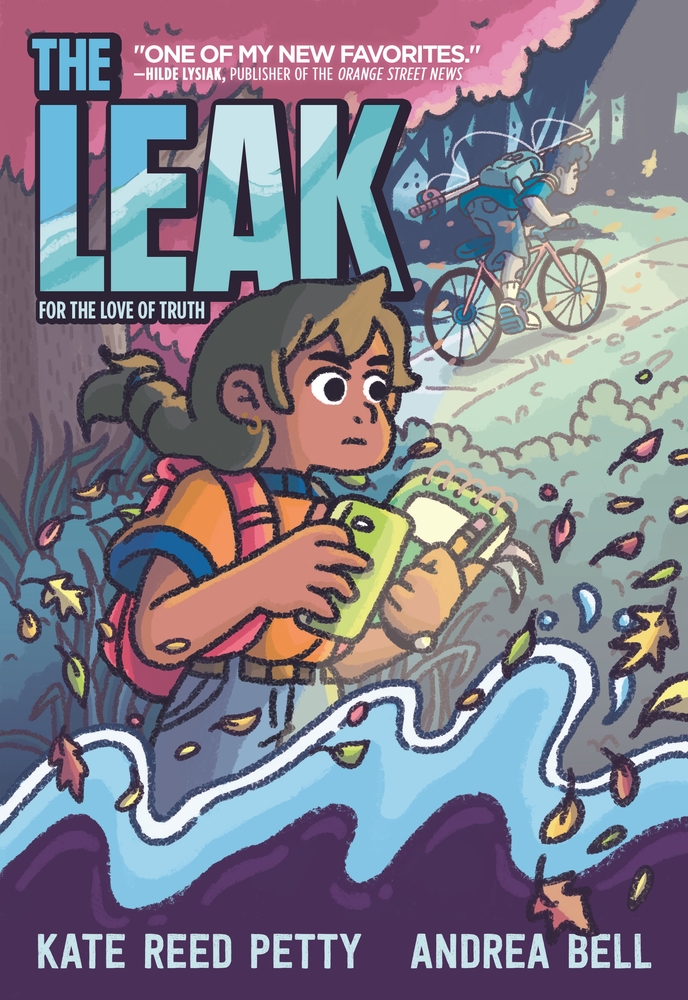
Environmental Themes
Inspired by the Flint, Michigan water crisis, The Leak centers on Ruth Keller, a twelve-year-old aspiring journalist. She publishes a weekly online newsletter about events in her small town and dreams of working at The New York Times with her brother’s girlfriend. During a fishing trip at the fictional Particular Lake, Ruth discovers that a strange black slime has polluted the water and killed the native fish. With the help of her crush, Jonathan, she decides to investigate the slime for her newsletter. Ruth and Jonathan suspect that the pollution originated at a local country club that has previously been cited for violating the Clean Water Act, but the owner refuses to answer their questions. The children trespass at the club and narrowly escape capture by the security team after finding no evidence of pollution. Determined to solve the mystery, they take a sample of lake water to their science teacher, Ms. Freeman. After testing the water, Ms. Freeman discovers that harmful chemicals, including lead, have polluted the lake.
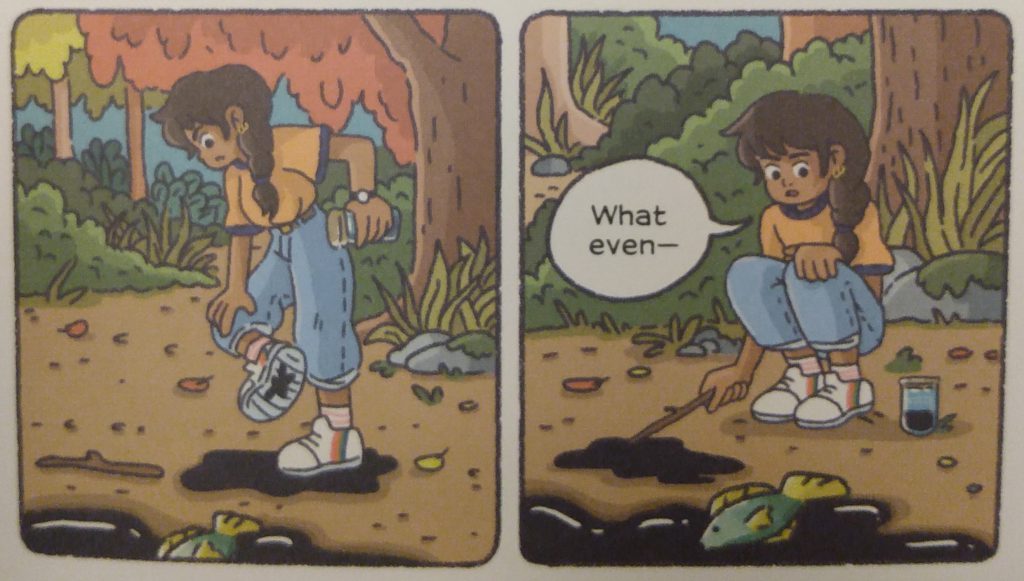
In class the next day, Ms. Freeman teaches the students about the Flint water crisis. Afterwards, she informs Ruth that she has attempted to contact the county and state environmental agency about Particular Lake, but, like the officials responsible for the Flint crisis, the agency has disregarded her warning. In response, Ruth publishes an article about the pollution in her newsletter that goes viral. That night, however, the owner of the country club visits the Keller home and threatens to take security footage of Ruth and Jonathan trespassing unless Ruth halts her investigation. Though Ruth’s parents ground her, she continues to work on the newsletter, naming additional water polluting businesses in the community.
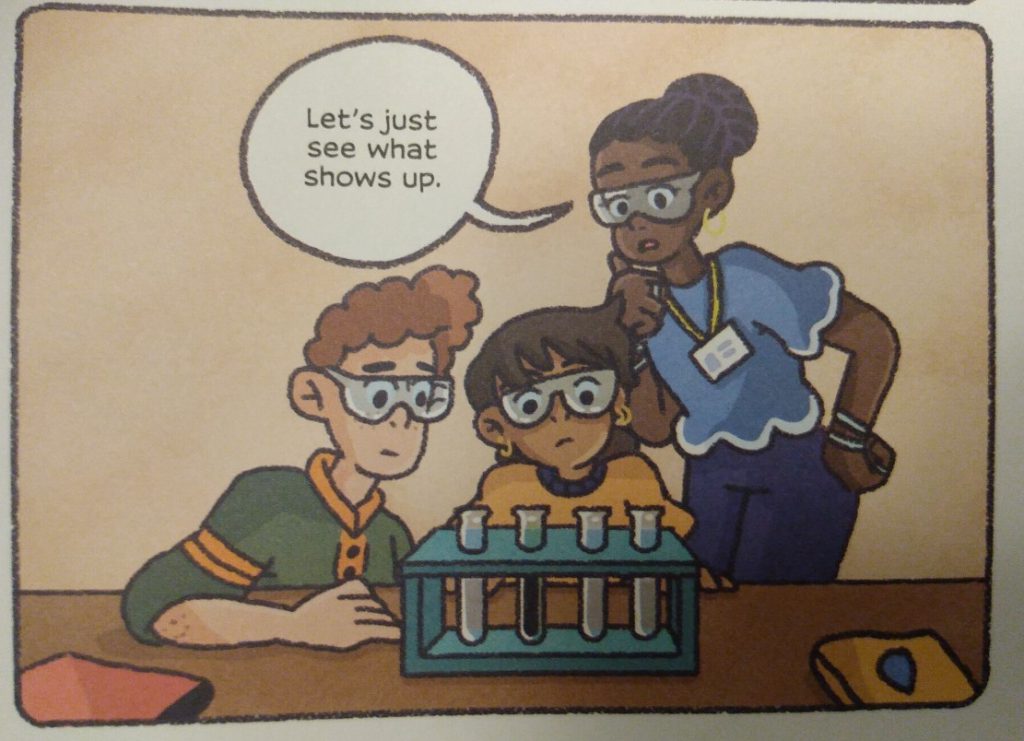
After visiting the dentist to have yet another cavity filled, Ruth realizes that the town’s tap water is also polluted with toxic chemicals–including chromium, lead, and barium–that are damaging the residents’ teeth and health. Determined to save her town, Ruth teams up with researchers to investigate the problem and raise awareness of this serious environmental issue.
The Leak effectively educates young readers about the dangers of water pollution and sheds light on the Flint water crisis. It also promotes youth advocacy by depicting Ruth speaking up for her community and advocating for change.
Paratexts
The comic includes a three-page afterword about the dangers of “fake news” and the need for trustworthy journalists who follow the ethical code that Ruth learns from her brother’s girlfriend. Petty encourages young readers to speak up about environmental issues like water pollution, writing, “You will always have a voice. it may be hard at first, but if you keep speaking up, eventually people will listen. So be sure you are speaking the truth” (235).
